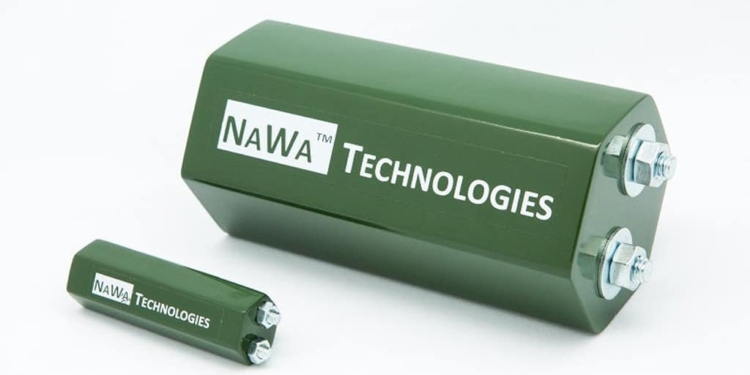Source: New Atlas article
Combining the unique strengths of lithium batteries with crazy-fast charging, carbon ultra-capacitors could save a ton of weight and add significant range and power to electric vehicles, according to Nawa Technologies. Based outside Marseilles, this fascinating French startup is working on a new type of battery it believes could offer some huge advantages in the EV space, among many others.
Nawa Technologies’ core product is a new type of carbon ultra-capacitor with a set of remarkable advantages over typical lithium-ion battery cells.

To start with, as a capacitor, its charge and discharge rates are absolutely spectacular compared with batteries – up to 1,000 times faster. We’re talking about charging an entire car battery in a matter of seconds, maybe three times quicker than filling a tank with fossil fuel.
“For me, the dream comes from the fact that we’re not using lithium, cobalt, rare earth metals,” says Boulanger. “These materials are polluting, and very complicated to extract from the Earth. We’re moving from a society where we extract oil to put in the car, to the same theme, but extracting metals and minerals to put in electric cars. It’s not good, because we’re destroying our planet.“Nawa’s ultra-capacitors only use carbon and aluminum. Our carbon comes from natural, sustainable sources. We don’t need to mine. When I created Nawa, that was what I wanted to promote: a real, sustainable way. That’s the dream. Building safer and cleaner batteries.”

The Nawa team believes that the full potential of the ultra-capacitor, at least in the EV space, becomes unlocked when it’s combined with a lithium battery.
“Most of the energy in regenerative braking is lost as heat, maybe 80 percent,” says Grape.
Other applications
There are plenty of other places a carbon ultra-capacitor could come in handy. Nawa is working with industrial power tool manufacturers who see the ultra-fast-charging capabilities and long cycle lives as opportunities to build longer-life tools for production line use that would charge in seconds between jobs. Then there’s factory and warehouse robots.
“We have a project where we’re working on AGV solutions – Automatic Guided Vehicles like you might see in warehouses,” says Grape. “These small, robot things that are running about picking up packages and moving them around. You can think of companies like Amazon, large warehouses. We’re working on a project with a European AGV manufacturer to demonstrate this in that kind of an application.”
The carbon ultra-capacitors might find uses in an Internet of Things type application as well.
“In the IoT domain, people are talking about battery-free sensors,” says Boulanger. “You have an energy source inside the sensors, and the sensors need to take some kind of measurement, then transmit the information. You need a very short buffer. Our technology is absolutely fantastic for that.”
And back in the automotive world, there are no limits on how you might charge these things, opening up some interesting ideas for inductive charging. Imagine simply driving your car over a surface at a charge station, paying for a top-up and driving away 10-20 seconds later. The range of an electric car would become almost irrelevant if you could charge it so quickly.
“If you want to take that a little further, you could imagine having ultra-capacitors buried under the road surface,” says Grape. “And when a bus passes over, it could charge very rapidly. And the ultra-capacitor itself could charge more slowly off the grid while the next bus is coming.”
Another key benefit: structural batteries
One final thing we haven’t yet touched on is the outstanding mechanical properties of the carbon ultra-capacitor. It’s lightweight and super-strong, opening up the opportunity to build ultra-capacitors into the very structure of an item in ways lithium simply can’t be used.
“We had a project with Airbus where we tested our technology to see how it would act from a mechanical point of view and for storage,” says Boulanger. “We can integrate a battery into any carbon fiber structure.”
“The mechanical property of our electrode is very, very strong, adds Grape. “It can be used to enforce the mechanical structure of a composite. You can integrate the battery into the shell of a car. The chassis, the doors, the roof, wherever you like.”
Indeed, the idea of a vehicle with no discrete battery unit to speak of is very much possible.
Nawa is currently testing and working with prototype units, but the team says by the second half of 2019, the company will have a full-scale production line in operation not far from Marseilles. The potential of these super-fast carbon ultra-capacitors sounds terrific. We look forward to seeing Nawa’s technology tested in earnest.
featured image and images credit: Nawa Technologies


































